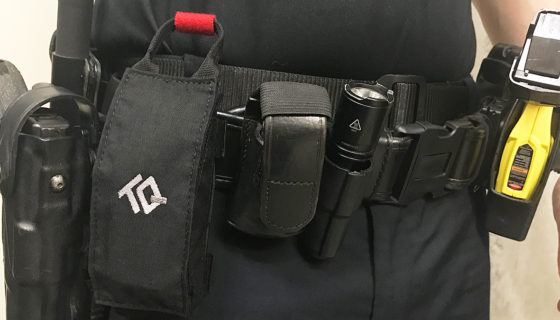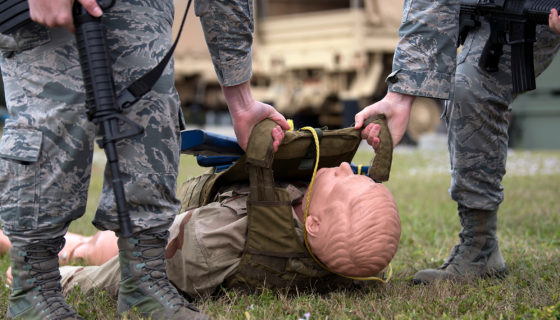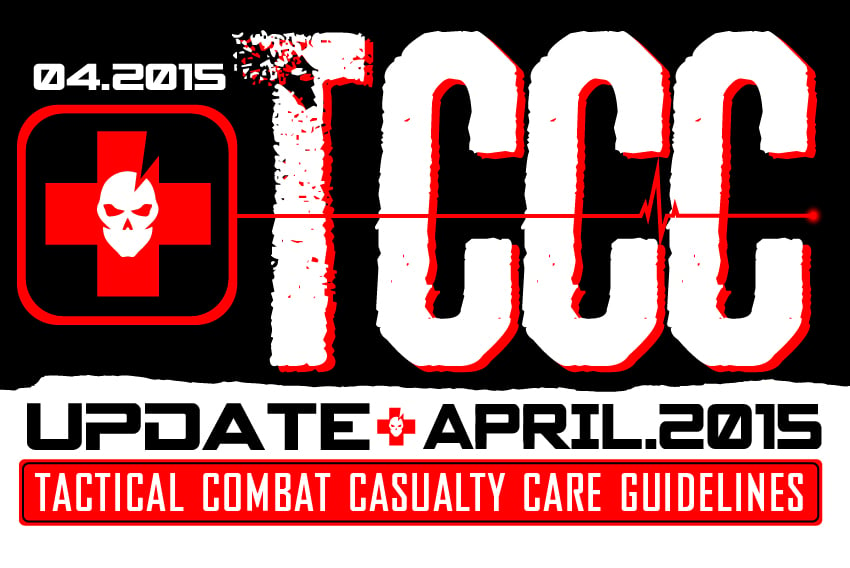Why Law Enforcement is just as Trainable in Combat Life Saving Skills as our Military
Why Law Enforcement is just as Trainable in Combat Life Saving Skills as our Military
After returning from my overseas tour, I was given an assignment within the training unit at my agency. It didn’t take long before I realized that there were some shortfalls to the First Aid and Self First Aid program we were offering.
The most outstanding concern was the lack of training concerning the use and deployment of a tourniquet. After taking a good look at our program, I proposed a lesson plan, which included the purpose and use of the tourniquet. It was approved after a short review and the trend began. Slowly, I was able to affect the entire agency, by exposing them to tourniquet training.
This is when I realized the enormous communication gap between our Military and Law Enforcement agencies. I began a personal campaign to bring attention to the fact that our soldiers (young as they may be) are considered trainable in combat life saving skills by our government and most of the Law Enforcement agencies in our country consider this type of training,”out of the realm or scope” and perhaps too difficult.
The Need For Training
That fact of the matter is that the skills needed to become proficient in combat life saving skills can be taught to police officers in the same manner it’s taught to soldiers. It’s common knowledge that special units have this type of training, but what about the patrol officer?
I often make this statement when I’m asked to sum up my reasons or inspirations for writing my book, A Police Officer’s Guide and Handbook to Tactical Casualty Care (Under Fire). When a Deputy or Police Officer approaches the next door of the next house on the next call and they get shot through the front door, for the next several minutes they may be fighting for their lives. During those few moments, he or she is in “COMBAT.” So then, why do we fail to prepare them for this increasingly common event?
For the most part, the response is just silence. I strongly believe that there is no reason our patrol officers should be at a disadvantage.
The Book
The target audience of my book is Law Enforcement. Whether on patrol, the court room or in a correctional facility, the concepts and skills organized in this book apply to everyone.
It’s designed to supplement the First Aid and Self First Aid courses mandated by Police Academies and presented in most agencies. It focuses on immediate hemorrhage control and explains the mindset required to survive such a traumatic event.
Here’s a look inside the book and what you’ll find within the chapters. I’ve included a few relevant quotes from each chapter too.
- Chapter One – Concepts, Goals and Relevance of Tactical Casualty Care to The Law Enforcement Community. “Several well written books have covered this subject very thoroughly but I have yet to find one that covers the subject of care under fire dedicated for the officer on patrol or who is not part of a specialized team.”
- Chapter Two – Three Stages of Care During a Critical Incident and Factors that Influence This Care. “Many agencies require medical transport to be summoned to your location to transport an injured person. Some agencies don’t address the issue at all. Think about this for a moment; would a violation of your agency’s policy be justified to save the life of a fellow officer?”
- Chapter Three – How to distinguish the Difference Between Life Threatening and Non-Life Threatening Injuries. “Keep in mind, the officer’s status is just one factor in your hasty rescue plan. Do not allow yourself to become emotionally involved and get drawn into becoming another victim. If this occurs, you won’t be able to perform the rescue, and now a second rescue (for you) will be required. Think scene safety!”
- Chapter Four – Understanding When and Where to Treat Life Threatening and Non-Life Threatening Injuries. “If the officer is awake and able to move, order the officer to initiate self-aid as appropriate, while awaiting rescue. Unfortunately, many people equate being shot with being helpless or dead, something frequently reinforced in training. Nothing could be further from the truth.”
- Chapter Five – The Application and Use of Field Dressings, Pressure Dressings, and Tourniquets. “The tourniquet has always been a subject of controversy. As a matter fact, some agencies may not even allow the subject to be used or even trained. Until about three years ago, my agency experienced the same issue. When the concerns were identified to our staff, examples and supporting documentation was provided showing in our case specifically, the training and use of the tourniquet would be beneficial, the training and use was approved.”
- Chapter Six – Recommendations for Assembling a “Gunshot Kit.” “*TUCSON – Some of the first deputies to arrive at the scene of the Jan. 8 shooting rampage here described a scene of “silent chaos” on Friday, and they added that the carnage probably would have been much worse without the help of a $99 first-aid kit that recently became standard-issue.”
- Chapter Seven – Techniques for Moving Casualties. “The primary purpose of all rescue work is to get injured people out of danger and to medical help as quickly as possible. If you have never attempted to physically move another person, you will be surprised to learn that it is not always as easy as it looks.”
- Chapter Eight – Scenario Based, Realistic and Dynamic Training. “No matter how you look at it, tactical casualty care under fire, addresses a moment in time which requires your immediate reaction and responses to a deadly attack. To assume that being exposed to a four-hour block of instruction in a classroom setting is enough, would be a huge misunderstanding of how your mind and body reacts to these types of emergencies.”
- Chapter Nine – Sample Lesson Plan. “Students will have an understanding of what “Tactical Casualty Care (Under Fire)” is and how the “Warrior mindset” plays an important role.”
- Chapter Ten – Sample Scenario Script with Timeline. “1st two hours, classroom with concepts and practical exercises. 2nd two hours, step by step application and scenarios.”
It is my intent to present this material to as many Law Enforcement personnel as possible, with the hopes to provide the basic knowledge and skills needed for survival. It would be a great add-on to the basic First Aid courses provided in most Law Enforcement Academies.
Editor’s note: Please join us in welcoming Rafael Navarro as a contributor on ITS Tactical. He’s currently serving in the Law Enforcement Training Division of the Pinellas County Sheriff’s Office, Florida. Rafael’s been in Law Enforcement since 2000; serving 4 years with the SWAT team, retiring as a SFC/E-7 after 21 Years of military service with the United States Army, Military Police Corps. and 24 months in Afghanistan in support of combat operations during Operation Enduring Freedom.
*By Sandhya Somashekhar and Sari Horwitz, Washington Post Staff Writers, Friday, January 21, 2011











Discussion